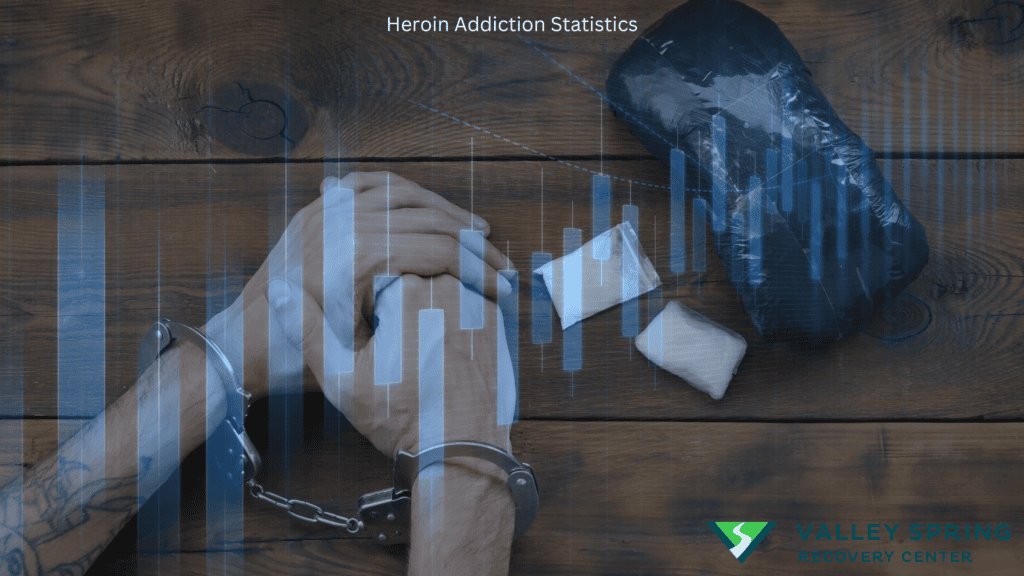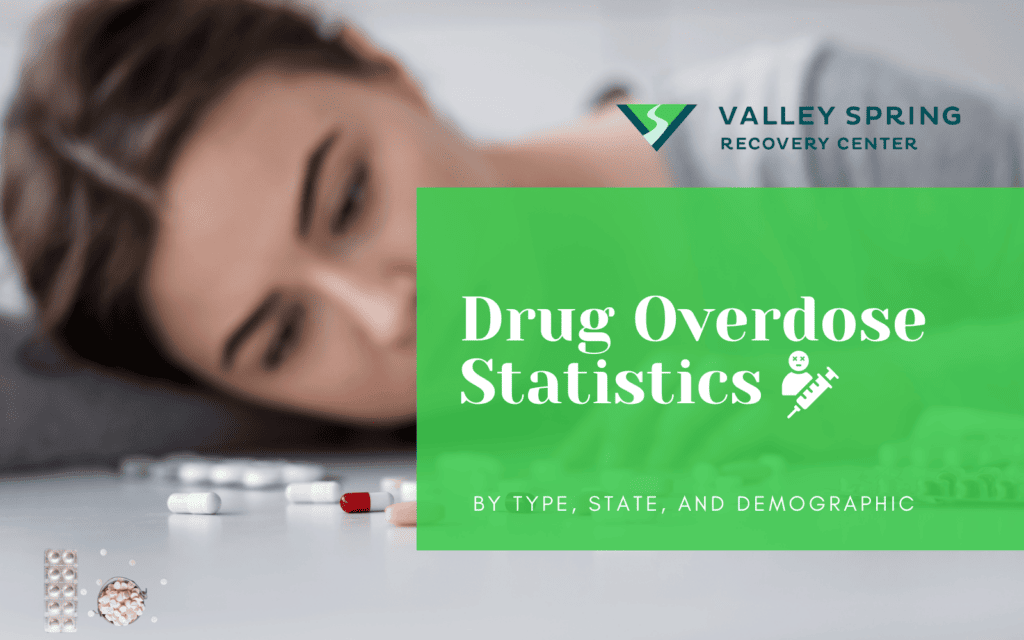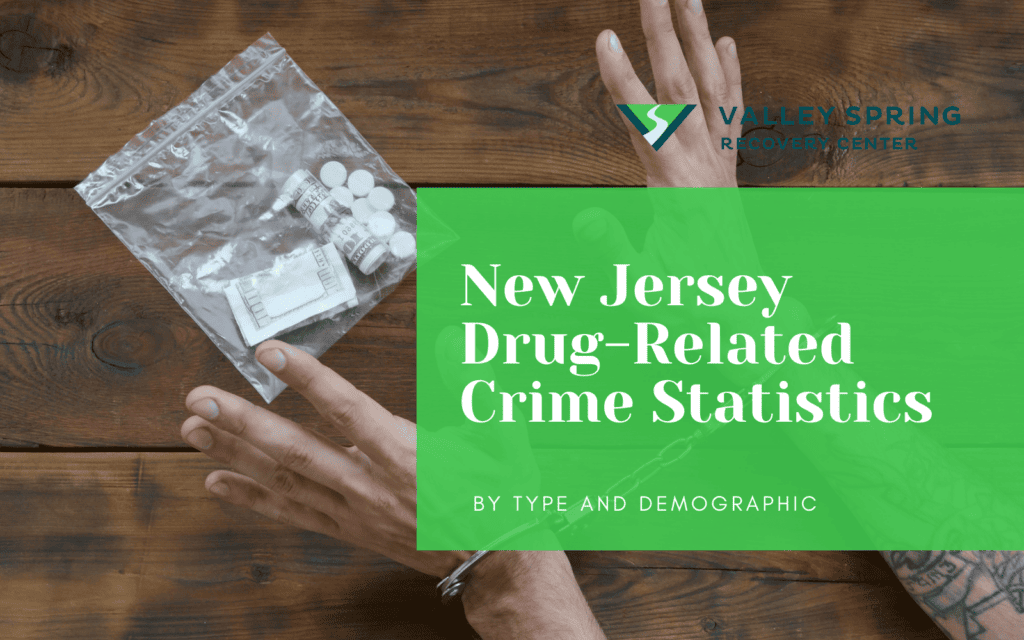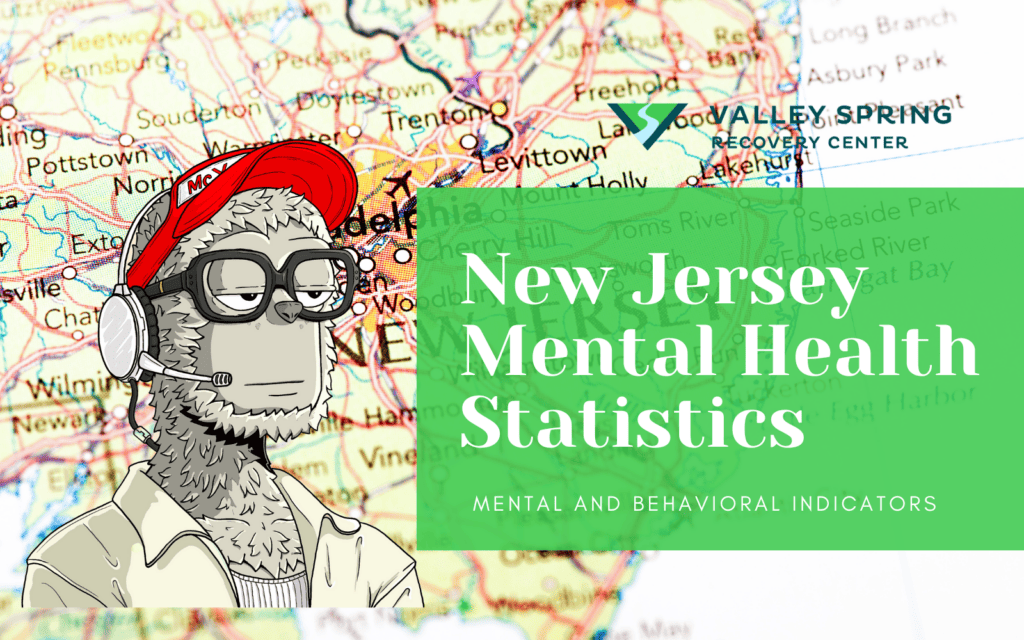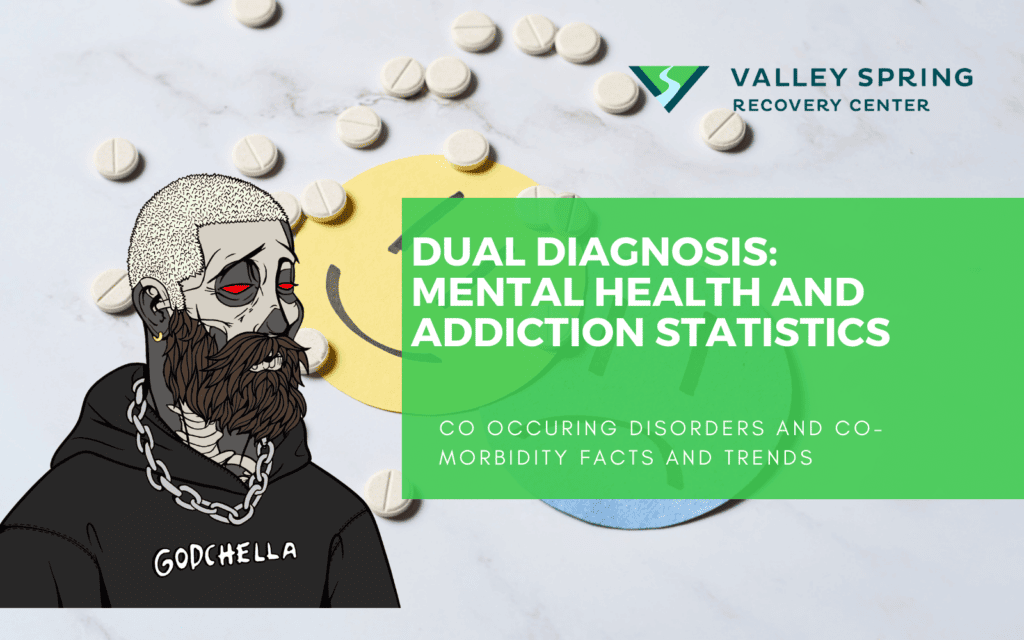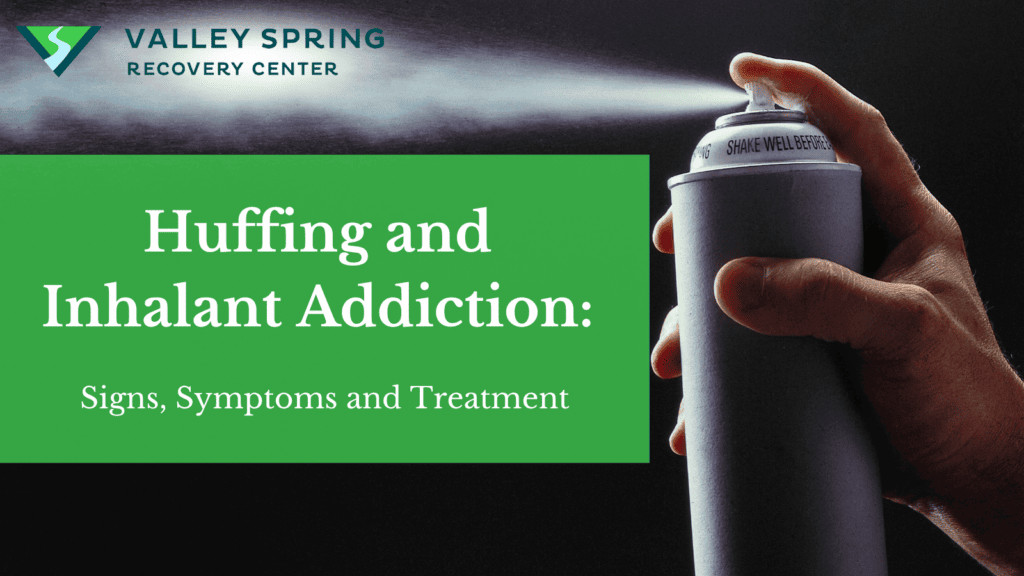Heroin, a powerful opioid derived from morphine, has a dangerous impact. In recent years, Heroin addiction trends have increased with the annual global heroin trade reaching between $50 billion to $640 billion. The top four states with the most heroin reports were New Jersey, New York, Ohio, and Pennsylvania with New York being considered the largest heroin market in the world.
It’s known for its ability to quickly create a strong sense of euphoria and relieve pain by interacting with opioid receptors in the brain, spinal cord, and organs. These pleasurable sensations, combined with relief from physical discomfort, often lead to addiction.
The widespread availability of heroin has fueled a devastating surge in addiction and fatal overdoses, contributing to the opioid epidemic that has torn apart lives in the United States. This crisis has resulted in significant economic costs, including increased healthcare expenses, strain on the criminal justice system, and reduced productivity, totaling billions of dollars annually.
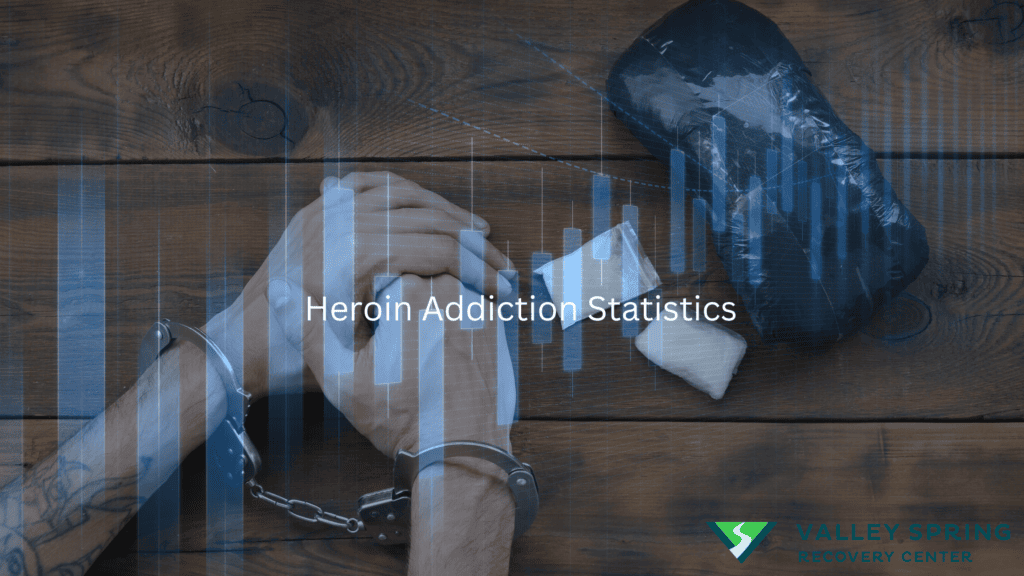
Key Takeaways
- New York is considered as the state with the largest heroin market and distribution network in the US.
- Mexico was the main country of origin for the heroin found in the United States.
- Along with methamphetamine and cocaine, heroin is one of the three narcotics that are most frequently injected in the United States.
- In 2018, opioids, including heroin, were involved in almost 70% of drug overdose deaths.
- In state prisons, almost 22% of the female inmates admitted to regularly using heroin.
- In New York, the percentage of all overdose deaths containing heroin fell to 37% between 2020 and 2021.
- From 2011 to 2019, the number of heroin-related opioid overdose deaths per 100,000 Californians increased from 0.9 to 2.2.
- 42% of all admissions to drug and alcohol treatment facilities in New Jersey were due to heroin addiction.
What is the Prevalence and Scope of heroin addiction?
To truly grasp the widespread use of heroin in American society, it’s essential to delve into the various factors that contribute to its prevalence. In this section, we aim to address key issues concerning how heroin finds its way into the United States, its origins, and its prevalence. By examining the routes and sources of heroin trafficking, we can gain insight into the intricate interplay between domestic and international factors that influence its distribution. Additionally, by studying the extent of heroin’s presence, we can highlight the scope of the problem, which affects not only major cities but also more remote areas. This underscores the pressing need for a comprehensive approach to address this significant public health crisis.- According to crime lab data from the National Forensic Laboratory Information System, there were over 128,000 reports of heroin in 2019. This represents a 13% drop from the approximately 148,000 complaints of heroin in 2018.
- Between $50 billion and $640 billion is estimated to represent the annual global heroin trade.
- In terms of heroin reports, California, Ohio, New Jersey, Pennsylvania, and New York are the top four states.
- The Great Lakes, Midwest, and Northeast regions are home to the biggest white powder heroin markets.
- The most heroin was seized by the DEA Field Divisions in Texas, California, Arizona, and New York in 2019.
- California, Texas, and Arizona are the main entry locations for heroin coming from Mexico.
- New York is considered as the state with the largest heroin market and distribution network in the US.
- Of the combinations reported to NFLIS-Drug, heroin and fentanyl made up about 27% of the total. Of the 1,066 kilograms of powders analyzed, 94 kilograms, or 8% by weight, were fentanyl combined with heroin.
- Mexico was the main country of origin for the heroin found in the United States. For seven consecutive years, 92% of the entire weight of heroin examined under the HSP had a Mexican provenance.
- Over 30,000 hectares of poppy cultivation, a key ingredient of heroin, were found in Mexico in 2019. Compared to the 41,800 hectares recorded in 2018, this was a 27% decline.
- From 106 metric tons in 2018, potential production of pure heroin declined to 78 metric tons in 2019. This marked a 27% reduction, but simultaneously fentanyl use has increased.
- Mexican white powder and Mexican black tar heroin are the two most common types of heroin available at the retail level in 2019. The average purity for each is 47% and 45%, respectively.
- The interstate highway system was used mostly for land transportation of illegal opiates, including heroin. Trucks or tractor trailers, personally owned vehicles, and leased cars are the most frequently utilized types of transportation.
- The quantity of heroin found along the southwest border has climbed 39% from 2013 to 2020. Particularly, about 2,300 kilos of heroin were found in 2018 and around 2,500 kilograms were found in 2019.
- Of those 12 and older, 745,000 reported using heroin in the preceding year in 2019, up from 404,000 in 2002.
- Among those aged 26 and older, the proportion of recent heroin users grew from 231,000 in 2002 to 658,000 in 2019.
- Along with methamphetamine and cocaine, heroin is one of the three narcotics that are most frequently injected in the United States.
- 9 in 10 heroin users also used one or more other drugs.
- Injection was the preferred method of administration for 71% of primary heroin admissions, whereas inhalation was reported by 24% of patients.
- People who inject drugs are more likely to die than the general population.
- The danger of contracting hepatitis C infection is higher in those who prefer to inject heroin. Hepatitis C infection among injecting drug users has a 20-person transmission rate.
- In 2016, the National Forensic Laboratory Information System received more than 157,000 reports of heroin use. This represents 9.93% of the top 25 drugs that are most commonly found.
- Amongst fentanyl mixtures, fentanyl with heroin was the most prevalent in 2017. Reports of fentanyl and heroin mixtures soared by 97% between 2016 and 2017.
Overdose Rates
To gain insight into the evolving nature of this epidemic and its impact on public health, it is essential to analyze the annual heroin overdose death rates. By examining the data presented here, we can detect periods of increase and potential shifts in the proportion of fatalities linked to heroin use.- The total number of heroin overdose deaths that were reported in 2017 was 15,482. In 2021, there were 9,173 fewer deaths overall.
- 75% of the 9,173 documented heroin overdose deaths in 2021 also involved other synthetic opioids besides methadone.
- In 2018, opioids were involved in almost 70% of drug overdose deaths. In 2018, there were 4% fewer heroin-related deaths, yet the drug still poses a major threat to public health and safety.
- Overdose deaths involving heroin decreased by more than 4% between 2017 and 2018. In particular, the number of fatal overdoses from heroin fell in the following states: Maryland, Connecticut, Michigan, Ohio, Illinois, Wisconsin, Kentucky, and Washington, DC, while it increased in California, Texas, and Tennessee.
- In 2010, there was a sharp rise in heroin overdose deaths.
- In 2021, heroin was a factor in more than 11% of all recorded opioid overdose deaths.
- The number of heroin-related deaths fell by 32% between 2020 and 2021.
Heroin-related Crime Rates
Within the prison system, a particular subset of inmates have a history of heroin usage. These people frequently have mental and physical scars from their addiction, and the drug’s tenacious hold on them has characterized their journey. They stress the critical need for extensive support networks and addiction treatment programs inside of jails and prisons, with the aim of enabling these people to escape the cycle of dependency.- An estimated 1.5 million people were taken into custody in 2019 for drug abuse-related offenses. This was the most arrests that year, followed by DUI arrests (over 1 million) and larceny-theft arrests (over 810,000).
- 63% of sentenced jail inmates and 58% of state prisoners between 2007 and 2009 had drug misuse or dependence issues. Comparatively, just 5% of people in the general population who are 18 or older satisfied the criteria for drug misuse or dependency.
- From 2007 to 2009, approximately 7% of state prisoners and 8% of sentenced jail inmates acknowledged taking heroin during the commission of the crime for which they were currently serving a sentence.
- In state prisons, almost 22% of the female inmates admitted to regularly using heroin. In contrast, 15% of male inmates in state prisons said they regularly used heroin.
- About 22% of jail and prison inmates aged 45 to 54 indicated regular heroin usage. For comparison, 12% of state convicts and 14% of jail inmates between the ages of 18 and 24 admitted regularly using heroin.
- High rates of frequent heroin use were present in 25% of state prisoners and 24% of jail inmates who were detained for property offenses.
Demographic Comparison
Comprehending the demographics of heroin use is vital, as it enables the customization of prevention, treatment, and harm reduction efforts to address the specific needs and vulnerabilities of various groups. This invaluable information serves as the foundation for tailored public health campaigns and educational initiatives that can effectively reach the populations most susceptible to the dangers associated with heroin.- Adults who are 35 years of age or older, unemployed, have only completed high school, and live in rural regions are more prone to use injectable drugs.
- For those 12 and older, the percentage of primary heroin admissions was 16% in 2012. Comparing this proportion to the rates in 2006 (14% in 2006) and 2011 (15%), there is a modest increase.
- 66%, or roughly two thirds, of these the primary heroin admissions were male.
New York
- 37% of the drugs used in overdose deaths in New York City in 2021 involved heroin.
- In New York, the percentage of all overdose deaths containing heroin fell to 37% between 2020 and 2021.
- In 2021, there were 23.2 male heroin users who died from accidental drug poisoning, age-adjusted, per 100,000 people in New York.
- Female users of heroin died from accidental drug poisoning at a rate of 6.7 per 100,000 New Yorkers in total, age-adjusted, in 2021.
- Latinos, at 36%, were the race or ethnicity with the largest proportion of unintentional drug overdose deaths involving heroin in 2021. This results in an 18.9 rate per 100,000 New Yorkers.
- Older persons aged 55 to 64 had the highest rate of unintended drug overdose deaths involving heroin in 2021, at 33%, or 33.4 per 100,000 New Yorkers.
California
- From 1,362 in 2010 to 3,979 in 2020, California’s emergency departments saw an upsurge in the non-fatal opioid-related heroin visits.
- From 2011 to 2019, the number of heroin-related opioid overdose deaths per 100,000 Californians increased from 0.9 to 2.2.
- At a rate of 5.4 per 100,000 Californians, American Indians and Alaska Natives were the race or ethnicity with the highest opioid overdose fatality rate involving heroin in 2019. The population of Asian, Native Hawaiian, and Pacific Islanders had the lowest rate, at 0.3.
- Adults between the ages of 18 and 25 had the highest prevalence of illicit substance use disorder (7.9%) from 2015 to 2016.
- The number of non-fatal emergency department visits for opioids, including heroin, was 30.3 per 100,000 Californians during 2012 to 2014.
- The number of non-fatal heroin-related emergency room visits more than quadrupled between 2006 and 2017, going from 1,219 to 4,095.
- White people had a greater rate of non-fatal emergency room visits for heroin overdose in 2017 than other racial groups, at 19.7 per 100,000 Californians.
- In California, 88% of those aged 12 and older who used or were dependent on illicit drugs over the years 2010 to 2014 did not receive treatment.
- In California, 25% of those admitted to substance use disorder treatment programs run by states and counties reported using heroin as their main drug of choice.
New Jersey
- In New Jersey, heroin poses the greatest risk. 41,854 New Jersey citizens were admitted to drug and alcohol treatment facilities in 2019 due to heroin addiction, making up 42% of all admissions. Following it are alcohol (31%), marijuana (11%), other opiates (6%), cocaine (5%), and other substances (4%).
- 21,313 people used drugs intravenously in New Jersey in 2021. Compared to 2019, there were 28,484 fewer intravenous drug users.
- Heroin was the most frequently mentioned drug among primary drug treatment admissions in New Jersey in 2011, accounting for 45% of all primary treatment admissions.
- In 2021, there had been an overall of 2,261 heroin drug rehab admissions in New Jersey individuals who were first-time clients, those who were new to the New Jersey substance use disorder treatment system. Essex, with 296 admissions, or 13% of the total, had the highest admittance rate.
- Adults aged 25 to 59 had New Jersey’s highest admission rate for heroin in 2021, at 29,961. They are followed by senior people (60 and older) at 1,938, young people (18 to 24) at 1,648, and kids (0 to 17) at 5.
Related Articles: New Jersey Addiction Statistics
FAQ
What is heroin?
Heroin, scientifically known as diacetylmorphine or diamorphine, is an opioid substance derived from the latex of the Papaver somniferum plant. Primarily utilized for its euphoric effects, heroin is a recreational drug that poses significant risks due to its highly addictive nature.
Chemical Composition and Forms: Heroin is a morphinan opioid, a derivative of morphine, which is itself extracted from certain varieties of poppy plants. The drug is available in multiple forms, including a white or brownish powder and a more potent, black sticky substance commonly referred to as “black tar heroin.” Often, heroin is “cut” or mixed with other substances like sugar or powdered milk, making it difficult for users to gauge the actual amount of heroin they are consuming. This ambiguity significantly increases the risk of overdose.
Medical Use: Diamorphine Hydrochloride: While heroin is predominantly known for recreational use, it’s worth noting that medical-grade diamorphine is used in some healthcare settings. In these instances, it is administered as a pure hydrochloride salt, ensuring a controlled and measured dosage.
Legal Classification: Schedule I Drug: In the United States, heroin is classified as a Schedule I drug by the Drug Enforcement Administration (DEA). This classification indicates that the substance has a high potential for abuse, no currently accepted medical use, and a lack of accepted safety for use under medical supervision.
The Rapidly Acting Opioid: A Double-Edged Sword: Heroin is a rapidly acting opioid, meaning its effects are felt almost immediately upon consumption. While this characteristic contributes to its allure for recreational use, it also makes heroin extremely addictive. The rapid onset of euphoria often leads to a cycle of dependency that is difficult to break, making it one of the most dangerous substances available.
A High-Risk Substance: Heroin’s complex chemical composition, combined with its highly addictive nature and legal restrictions, make it a high-risk substance. Its various forms and the common practice of “cutting” it with other substances further exacerbate the risks, including the likelihood of overdose. Therefore, understanding the full context of heroin is crucial for public awareness and prevention efforts.
How do people use heroin?
Many individuals commonly administer heroin through injection, although it can also be used by inhaling or snorting.
What are the effects of heroin?
Heroin use can lead to immediate sensations of euphoria and warmth, but it may also cause nausea and vomiting shortly after use. In the long term, heroin abuse can result in persistent issues such as insomnia, increased susceptibility to skin infections, and the development of mental disorders.
What are the warning signs of heroin withdrawal?
As a person’s body builds a tolerance to heroin, they require higher doses to achieve the same euphoric effect. When someone addicted to heroin decides to stop using it, they can expect to go through withdrawal symptoms, which may include cold flashes, involuntary leg movements, chills, vomiting, and difficulty falling asleep.
Where is heroin found in the US sourced from?
It’s worth noting that Mexico has consistently been recognized as the primary source of heroin production, a trend that has continued for seven consecutive years since 2020. However, it’s important to emphasize a significant development: Mexico experienced a significant 27% reduction in poppy cultivation, a key ingredient in heroin production, in the year 2018. There are also key states with ports that make it highly accessible, this is what makes heroin addiction in New Jersey.
How is heroin transported into the US?
The interstate highway system became the primary route for transporting heroin overland. The vehicles used for this illegal transportation include trucks, privately owned cars, and rental vehicles.
Which demographic are the most likely to inject drugs like heroin?
People who inject drugs like heroin often fit into certain demographic categories. Typically, these injection drug addicts are 35 years of age or older, often face unemployment, have a high school education as their highest level of educational attainment, and are frequently located in rural areas.
How does heroin addiction contribute to drug related crimes?
Heroin addiction significantly contributes to drug-related crimes, serving as both a cause and consequence of criminal behavior. According to the National Institute on Drug Abuse, approximately 56% of individuals arrested for drug offenses in the United States tested positive for opioids, including heroin. The addictive nature of heroin often leads individuals to engage in criminal activities such as theft, burglary, and drug trafficking to sustain their addiction. This creates a vicious cycle where heroin addiction exacerbates the rate of drug-related crimes, further straining law enforcement resources and community safety.
Where to Get Treatment for Heroin Addiction?
Heroin addiction treatment is widely available through various resources designed to support individuals on their recovery journey. It’s crucial to seek help from a healthcare provider or contact a local health department for guidance on treatment options tailored to individual needs. Additionally, Valley Spring Recovery Center offers specialized treatment programs for heroin addiction in New Jersey, providing both medical and therapeutic support in a supportive environment.
Sources
- nida.nih.gov
- wonder.cdc.gov
- dea.gov
- samhsa.gov
- ncbi.nlm.nih.gov
- tandfonline.com
- cdc.gov
- stacks.cdc.gov
- nyc.gov
- chcf.org
- state.nj.us
- nj.gov
- obamawhitehouse.archives.gov
- bjs.ojp.gov
- ucr.fbi.gov
- unodc.org
- publichealth.lacounty.gov
- webmd.com
- drugaware.com.au
Dr. Michael Olla
All author postsShare This Post

